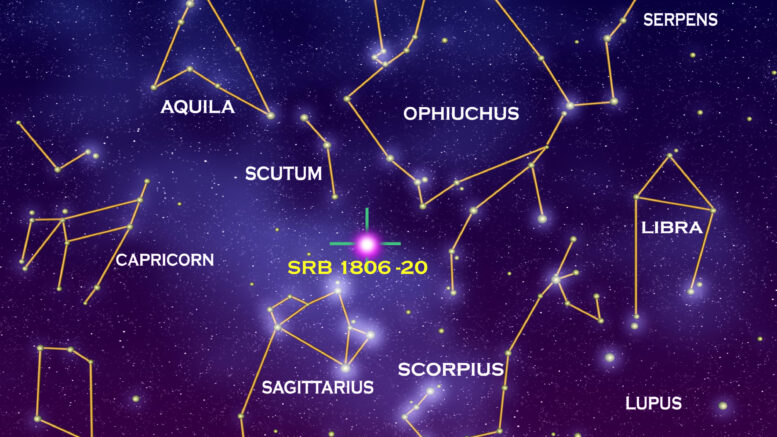A constellation is an area on the celestial sphere in which a group of visible stars forms a perceived outline or pattern, typically representing an animal, mythological person or creature, or an inanimate object. Due to the location of the Pacific Northwest, there are some constellations that will never be visible, those that are always visible in the nights sky, and those that are seasonally visible. Today, we will be talking about the constellation that are always visible in the sky for those living in the Northern Hemisphere.
A constellation that is always visible in the sky is called circumpolar. Circumpolar constellations are constellations that never set below the horizon when seen from a particular location on Earth. For new astronomers, these constellations are the best to begin viewing because there are always available to view on starry nights.
In the Northern Hemisphere and those living in the Pacific Northwest, there are 6 circumpolar constellations. If you’re curious about what the technical definition of a constellation is, check out this article on the subject.
Constellations And Famous Stars
Camelopardalis
Camelopardalis is a large but faint constellation of the northern sky representing a giraffe introduced in 1612 or 1613 by Petrus Plancius. There are not any super famous images that one would recognize from this constellation, nor are there too many super famous stars.
Cassiopeia
Named after the vain queen Cassiopeia in Greek mythology, who boasted about her unrivaled beauty, Cassiopeia was one of the 48 constellations listed by the 2nd-century Greek astronomer Ptolemy, and it remains one of the 88 modern constellations today. Two Messier objects, M52 (NGC 7654) and M103 (NGC 581) are in Cassiopeia. Both Messier objects are open clusters. M52, once described as a “kidney-shaped” cluster, contains approximately 100 stars and is 5200 light-years from Earth. Cassiopeia is also close the M31 Andromeda and is often used as a way to find Andromeda.
Cepheus
Named after Cepheus, a king of Aethiopia in Greek mythology, Cepheus was one of the 48 constellations listed by the second century astronomer Ptolemy, and it remains one of the 88 constellations in the modern times. Prominent members include several red giants, several prominent double stars and binary stars including Omicron Cephei, NGC 188 which is an open cluster that has the distinction of being the closest open cluster to the north celestial pole, as well as one of the oldest-known open clusters, and the nebula NGC 7538 is home to the largest-yet-discovered protostar
Draco
Draco is a constellation in the far northern sky. Its name is Latin for dragon. It was one of the 48 constellations listed by the 2nd century astronomer Ptolemy, and remains one of the 88 modern constellations today. The north pole of the ecliptic is in Draco. Famous objects in this area of the sky includes the Cats Eye Nebula, the “Tadpole Galaxy”, and the Hercules–Corona Borealis Great Wall.
Ursa Major
Ursa Major is primarily known from the asterism of its main seven stars, which has been called the “Big Dipper.” In antiquity, it was one of the original 48 constellations listed by Ptolemy in the 2nd century AD. Today it is the third largest of the 88 modern constellations. Two of its stars, named Dubhe and Merak can be used as the navigational pointer towards the place of the current northern pole star, Polaris in Ursa Minor. Famous objects in this constellation include M108, M109, M81, M82, M97, and M101.
Ursa Minor
Like the Great Bear, the tail of the Little Bear may also be seen as the handle of a ladle, hence the North American name, Little Dipper: seven stars with four in its bowl like its partner the Big Dipper. It was one of the 48 constellations listed by the 2nd-century astronomer Ptolemy, and remains one of the 88 modern constellations. Ursa Minor has traditionally been important for navigation, particularly by mariners, because of Polaris being the north pole star. Marking the Little Bear’s tail, Polaris is the brightest star in the constellation. Ursa Minor is rather devoid of deep-sky objects. There is NGC 3172, which is is a faint, magnitude 14.9 galaxy that happens to be the closest NGC object to the North Celestial Pole. Ursa Minor is also the origin of the Ursids, a prominent meteor shower that occurs in Ursa Minor, peaks between December 18 and 25.
For those who are curious, there are circumpolar constellations in the Southern Hemisphere. They are the Carina, Centaurus, and Crux constellations to view year round.
Sources
https://astronomy.com/observing/astro-for-kids/2008/03/learn-the-constellations

Interesting post. Ill be sticking around to hear more from you guys. Thanks!
Thank you so much for this brilliant web page;this is the kind of thing that keeps me awake through the day. I have been looking around for this page after I heard about them from a buddy and was thrilled when I found it after searching for awhile. Being a avid blogger, I’m dazzled to see others taking initivative and contributing to the community. Just wanted to comment to show my appreciation for your web site as it is very exciting, and many bloggers do not get credit they deserve. I am sure I’ll drop by again and will send some of my friends.
I genuinely enjoy looking through on this site, as it has got some good posts. Keep up the good work!